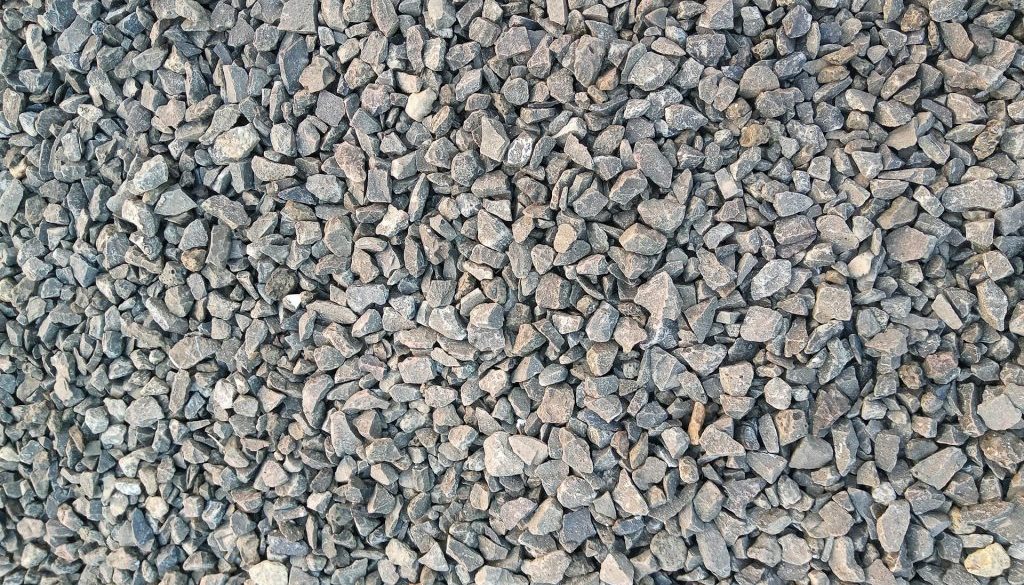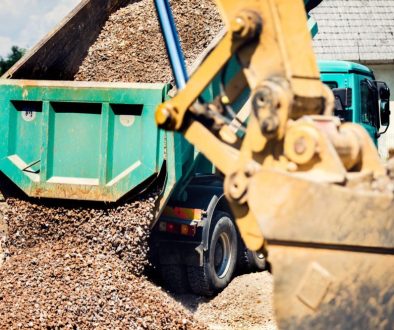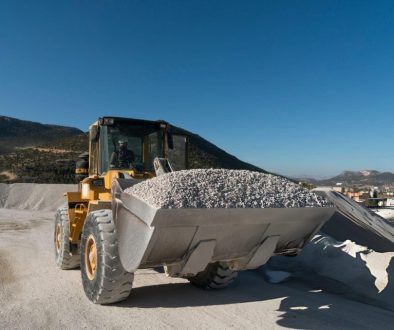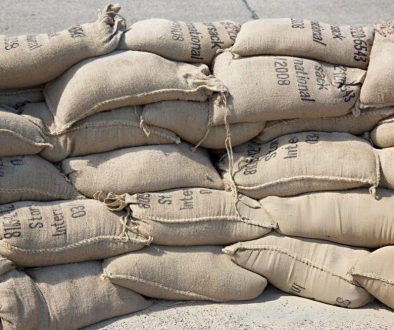Construction aggregates are one of those materials you don’t think much about until something starts to go wrong. From gravel in your drive to the sand used in your patio base, they do a lot of heavy lifting. But just like any other building material, aggregates can wear down over time. Cracking, disintegrating or turning into an unstable mess isn’t just frustrating, it can affect the strength and safety of the entire area they support.
In Cheshire, where construction projects are common across both home improvement sites and larger developments, knowing what to do when aggregates start to break down is really helpful. Whether you’re a homeowner laying a new path or a builder managing a foundation, spotting problems early and knowing how to handle them can save time, effort and money down the line.
Recognising Signs Of Breakdown
Most people notice something’s wrong when the surface doesn’t feel as solid as it used to. You might see cracks forming along walkways, loose chips of aggregate around the edges, or discolouration showing up in patches. These are usually the first signs that the material underneath isn’t holding together the way it should.
Here are a few of the common indicators to watch for:
1. Crumbling or flaking
2. Pockets of dust or loose particles gathering on the surface
3. Discoloured or patchy areas that weren’t there before
4. Sagging sections or uneven surfaces
5. Pooling water where it used to drain properly
Changes in weather often play a big part. Heavy rain followed by dry conditions or freezing temperatures can weaken the structure. If your aggregates are exposed year-round, they’re always expanding and contracting, which puts them under pressure. Areas with constant foot or vehicle traffic can also wear down faster. For example, a gravel driveway in use daily by cars will likely show earlier signs of breakdown than garden paths that see light use.
Because problems usually start small, it’s easy to brush them off. But ignoring early signs gives the issues time to get worse. Paying attention and acting sooner rather than later means you’ve got a better shot of preventing further damage.
Immediate Steps To Take
So, you’ve noticed the aggregates are starting to look a bit past their best. What happens next? First off, don’t panic. Some damage doesn’t need immediate replacement, but there are a few key things you can do to manage it while you decide your next move.
1. Keep the area safe – If loose aggregates are making surfaces uneven or slippery, block off impacted sections to prevent trips or falls.
2. Stop further wear – Redirect foot traffic or vehicles while the surface is compromised. Use temporary coverings like sturdy mats or boards if needed.
3. Avoid adding weight – Don’t load skip deliveries or heavy materials directly on top of degraded areas.
4. Clear debris regularly – Loose materials can build up and hide worsening damage. Keeping the space tidy helps keep an eye on changes.
5. Take note of patterns – Which parts are breaking down first? Are there patches where water collects? This kind of info helps if you call in help.
And that’s the important bit—don’t leave things too long. If you’re unsure how bad the breakdown really is, it’s always safer to have someone with experience take a proper look. A quick check might reveal a simple fix, whereas waiting could turn a repair job into a full replacement.
Long-Term Solutions For Damaged Aggregates
Once the early damage has been spotted and temporary measures are in place, it’s time to think about more lasting fixes. Depending on how far things have gone, this could involve straightforward replacement in a small area or a larger restoration if the damage is more widespread.
If aggregates are crumbling or the base underneath has shifted, replacement is usually the best option. Trying to patch over the top of materials that have already lost their structure tends to be short-lived and can lead to further problems. For areas like driveways, garden paths or base layers for paving, it’s often a smarter move to start fresh rather than patch.
That said, you may not need to replace everything. In some cases, you can mix in high-quality recycled aggregates with the original material, giving the structure a fresh bit of strength while cutting down on waste. This approach works well when the top few layers are showing wear but the foundation below is still stable.
Reinforcement is another method sometimes used, especially for deeper foundations in construction work. Professionals might choose to compact or reshape areas using new aggregate mixes that are better suited to current conditions, like improved drainage or increased footfall.
No matter which route you go, materials matter. Low-grade fill may be cheap but breaks down fast. Going with recycled aggregates from a trusted source ensures they’ve been properly tested and screened, giving you solid performance without starting from scratch every few years.
Preventing Future Breakdown Of Aggregates
Once things are fixed or replaced, the last thing you want is to end up in the same position five months later. Looking after construction aggregates properly can make a big difference to how long they last and how well they perform.
A few basic steps can go a long way:
1. Make sure weight is spread evenly. Heavy skips, cars or machinery placed too often on one spot will quickly wear it down.
2. Check that there’s good drainage. If water is collecting and sitting in one area, it’s likely to cause problems, especially in colder months.
3. Use edging where needed. On paths or driveways, this helps keep the material in place and prevents it from thinning out at the sides.
4. Plan for the way the space is used. A decorative path won’t need the same kind of base as an area that’s being driven on every day.
5. Keep on top of upkeep. That means clearing debris, checking for soft patches, and booking expert help early when small signs show up again.
Aggregate breakdown often comes from a mix of wear and weather, but poor planning or rushed installation plays a big role too. Investing time in a solid layout upfront can make your base far more reliable once it’s in use. It’s a bit like preparing for a long trip. You wouldn’t set off without checking your tyres and fuel, right?
Ensuring Your Project’s Success With Professional Help
Professional help is worth seeking when things get beyond surface-level wear. If you’re not sure whether the material is failing because of the aggregates themselves or shifts in the underlying ground, a trained eye can clear that up fast. This is especially true in places like Cheshire, where weather patterns can change sharply heading into colder months.
Local knowledge also makes a big impact. Someone who understands regional conditions will know which mixes hold up best in your area and can spot the early warning signs before a full replacement becomes unavoidable. That experience also comes in handy when placing new recycled aggregates, ensuring they’re not just dumped in but laid and compacted correctly.
Having a reliable team backing you up reduces stress and makes sure you’re putting your money into long-term fixes, not short-term patches you’ll have to redo. Whether it’s a domestic job or a much bigger site, knowing you’ve got the right support makes the rest of the project go smoother.
Keeping Your Construction Aggregates In Top Shape
Construction aggregates don’t ask for much, but they do need a bit of care now and then. When they start to break down, early signs and quick action make all the difference. Once the damage is managed, choosing the right materials and setting up smarter ways to maintain them means future problems are easier to avoid.
In Cheshire, where changing weather and busy project sites are part of life, having strong aggregates makes everything stronger—your boundaries, your foundations, your driveways and even your peace of mind. Whether you’re fixing a small path or rebuilding a major surface, the best results come from working with people who know what quality really looks like.
Long-lasting results often start with quick decisions and good advice. Spot the early warning signs, respond before damage sets in and bring in experts who can help you get it right, the first time.
To keep your construction projects in top shape, it’s important to regularly assess and manage the materials you use. Enviro Skip Hire is here to support your work with reliable solutions that match your needs. Take a look at our range of aggregates to build a strong foundation that lasts well into the future.




